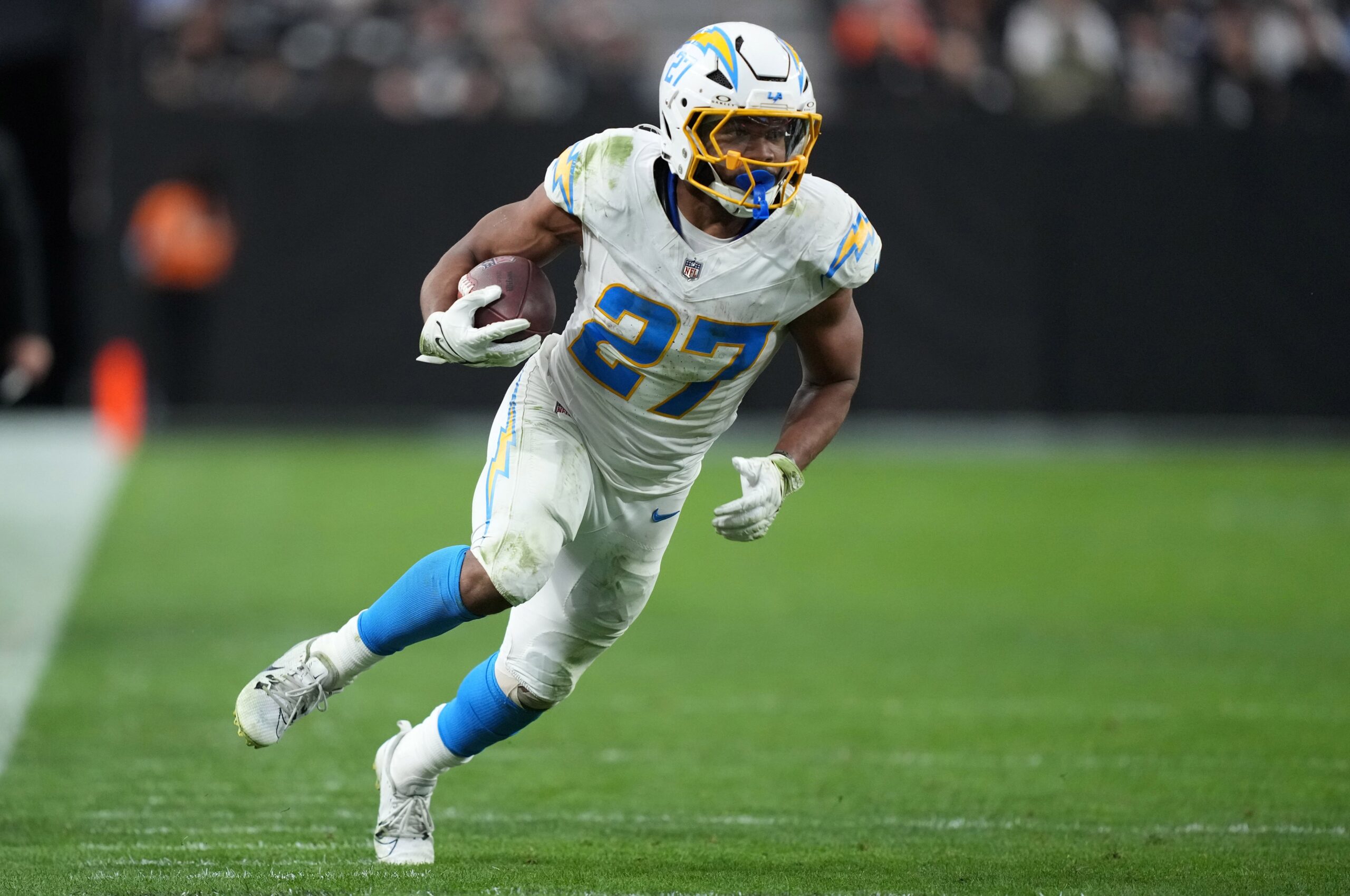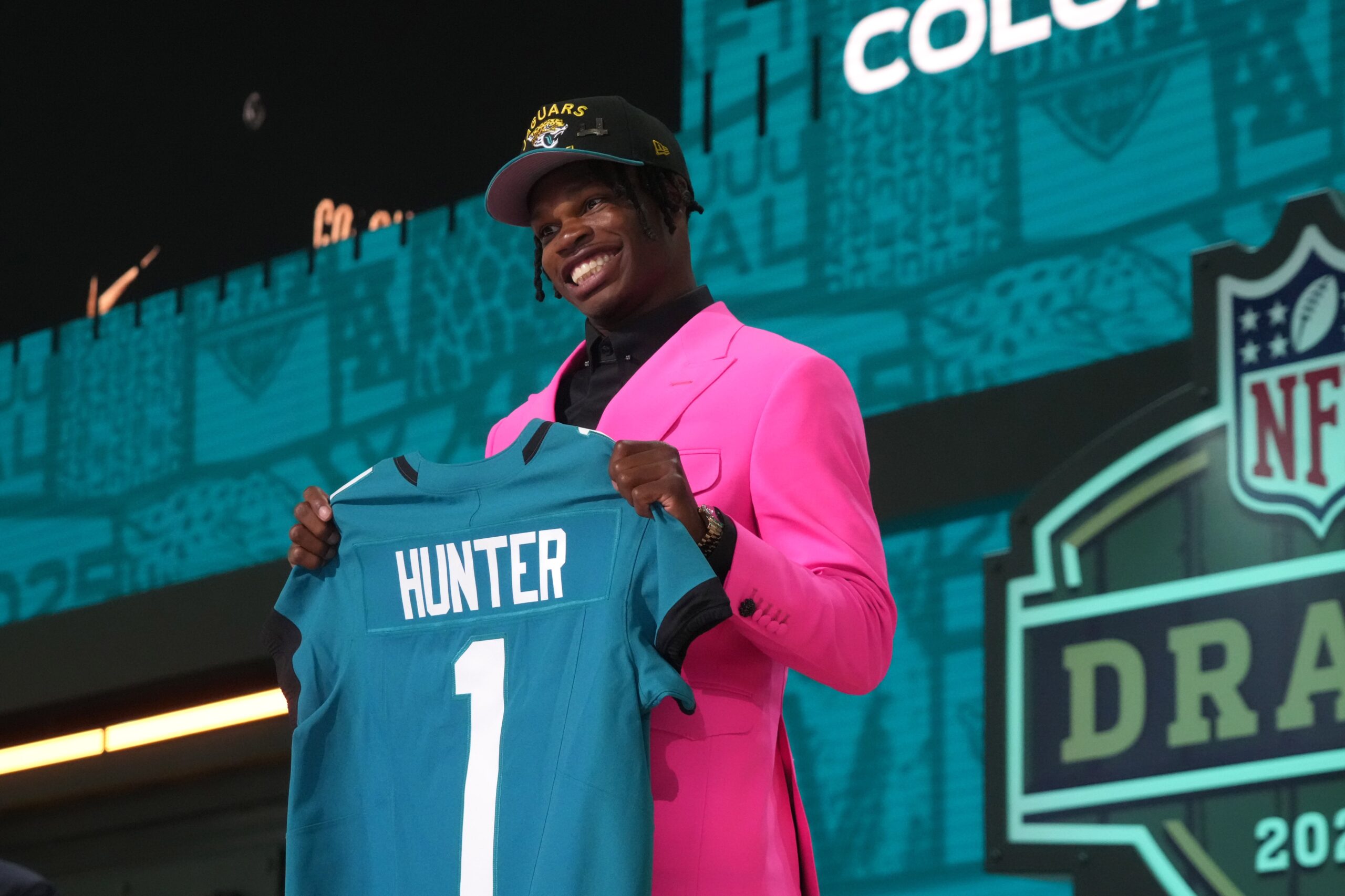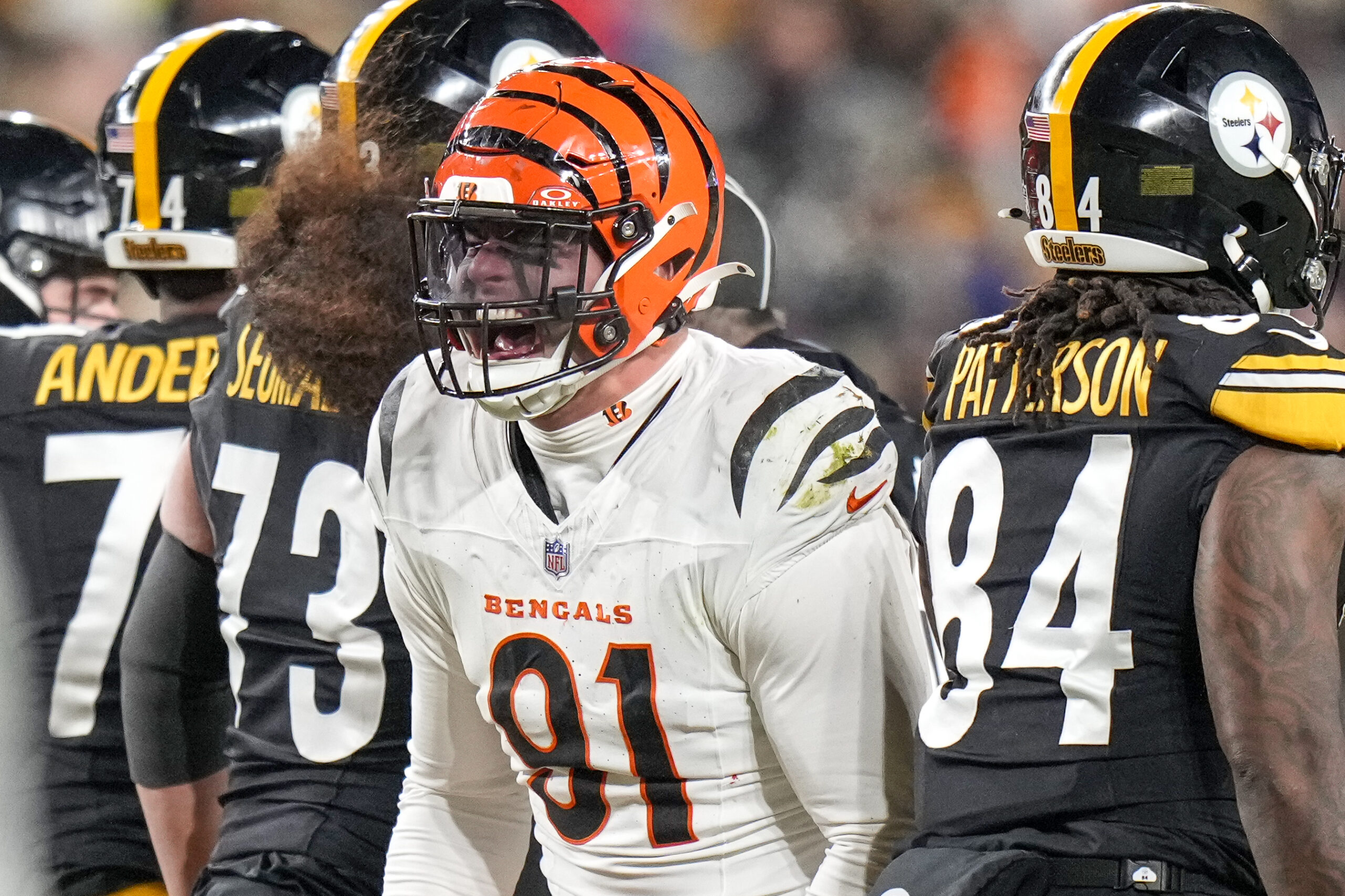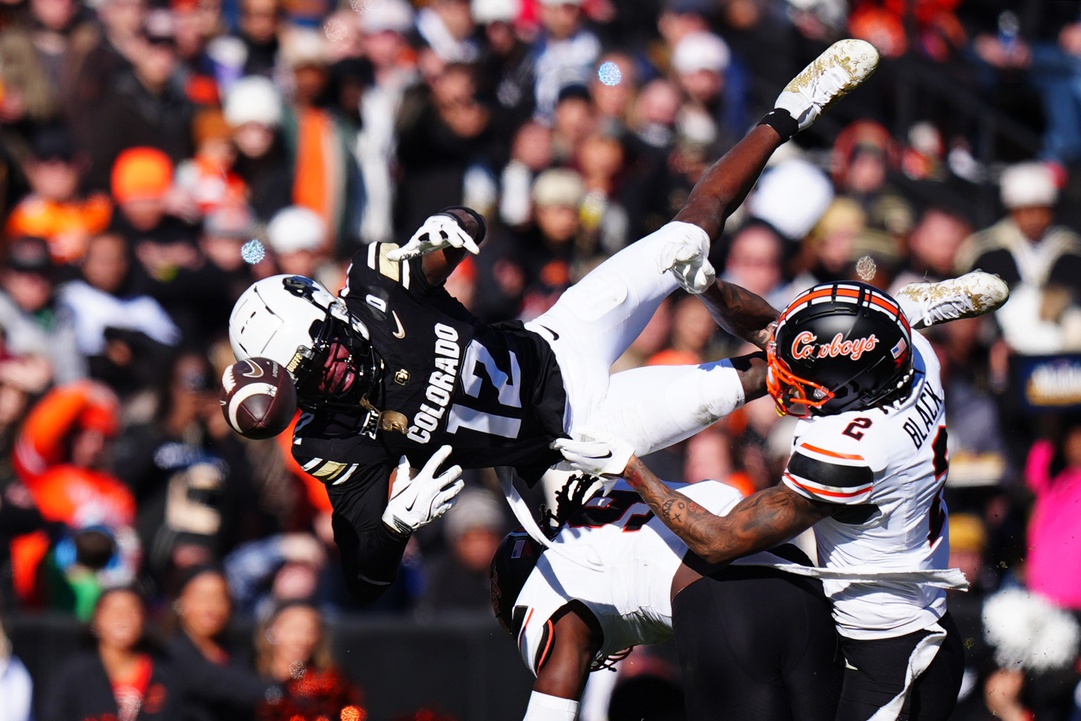NFL Analysis
1/1/24
10 min read
Why The Baltimore Ravens Defense Is Kryptonite to NFL's Best Offenses
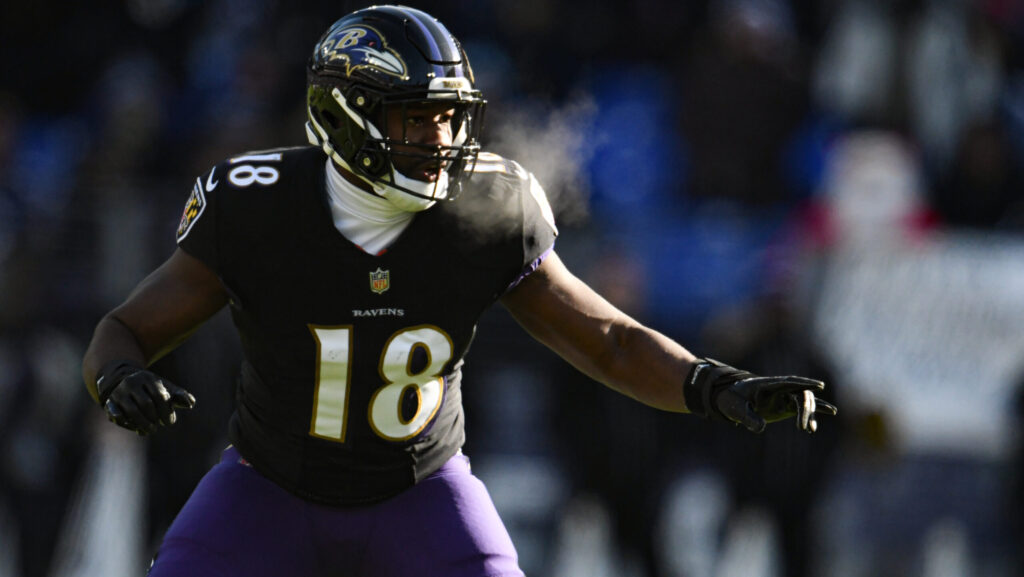
The Kyle Shanahan coaching conglomerate runs the NFL. Young Shanahan and his many associates are employed all over the league as head coaches and offensive coordinators.
They're around every corner and inside every offensive coaching staff. There's no escaping them and their influence over the sport.
Shanahan is the head of the operation, and Miami Dolphins coach Mike McDaniel is the next in line. The two have bent the sport to their will in the past half-decade, whether together in San Francisco or separately as head coaches.
Play-action, motion, pistol formations, optimizing YAC — every offensive mechanism that feels unique or overpowered right now is because of what those two are doing to lead the way.
That's been as true this season as it's ever been. Shanahan's 49ers might be one of the best offenses in the game's history, and McDaniel's Dolphins are as explosive as any offense. Nobody ever wants to play these two offenses.
Nobody except the Baltimore Ravens.
Ravens Are Shanahan Slayers
In back-to-back weeks, the Ravens have cracked down on two of the league's scariest offenses, two offenses that share DNA. MVP candidate quarterbacks faltered, and otherwise, superhuman play-callers looked mortal for once.
So few defenses have contained either the 49ers or the Dolphins this season, yet the Ravens had little issue dismantling both in consecutive weeks.
Baltimore's defense has been exceptional all season, and there are a million reasons to celebrate it. Still, there is something special — something meaningful — about taking it to the two offenses every other coordinator turns to for inspiration.
The Ravens’ defense, perhaps by nothing more than coincidence, is built to attack these two offenses. Each layer of the defense throws a wrench in everything those offenses want to do and chips away at the integrity of how they are constructed.
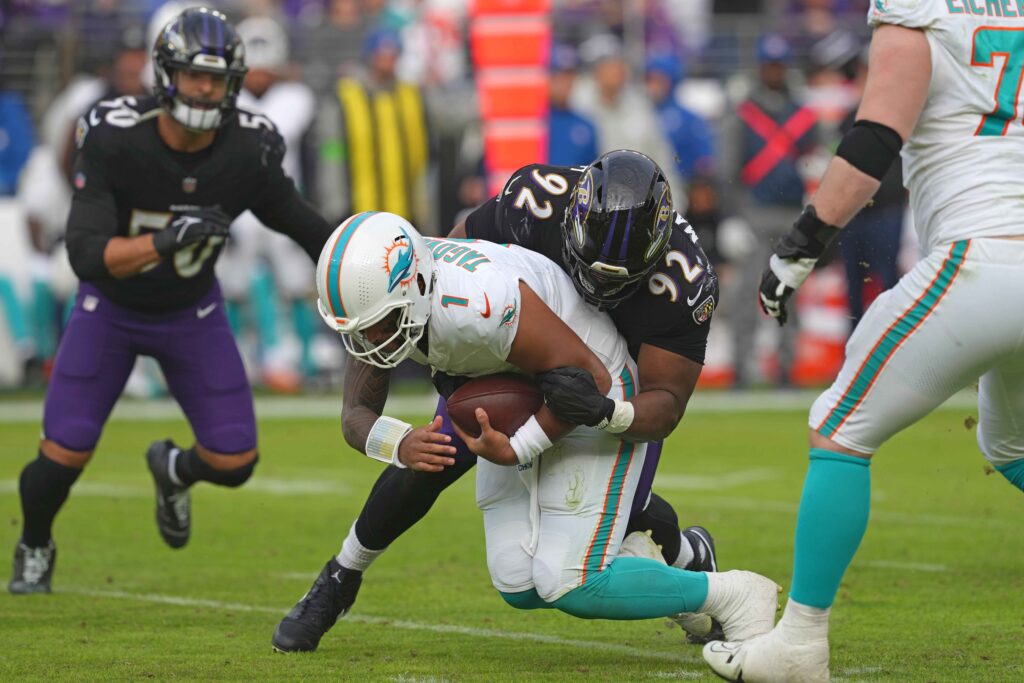
Baltimore Is Uniquely Equipped
Justin Madubuike and Jadeveon Clowney are hellions up front. Madubuike is a car bomb in the middle, and even all these years later, Clowney is still the league's preeminent pocket pusher off the edge.
Those players are helpful against any offense, but especially against offenses led by Brock Purdy and Tua Tagovailoa. You want to suffocate both of those quarterbacks in the pocket. You want to speed up their process and crowd their throwing platform. Don't let them escape; make them feel like they can't breathe.
Purdy has the confidence and arm talent to fight back in those instances from time to time, but Tagovailoa completely crumbles.
Then, there's Roquan Smith at linebacker. Smith is a vacuum of space over the middle, a black hole between the numbers who slams throwing windows shut. Smith's awareness of routes and spacing in his zones is textbook, and he doesn't shy away from breaking structure with calculated risks to pick passes off.
Even on plays where Smith doesn't make a play on the ball, he often buys time for the rest of the coverage to fall in place.
In the secondary, safety Kyle Hamilton gives defensive coordinator Mike Macdonald a unique weapon to move all over the formation and solve all kinds of problems. Hamilton can play a deep half, play man-to-man in the slot, fit the run and fire off as a blitzer all on the same drive if that's what is asked of him.
Hamilton is a white whale in a league always looking for defensive backs that serve as schematic skeleton keys.
Having those star players, namely Smith and Hamilton, unlocks answers for disrupting the Shanahan and McDaniel offenses other defenses don't have access to. Macdonald has honed those answers into a clear blueprint — not one that can be copied, but one that works for the Ravens and only the Ravens because of the specific players on this roster.
Cover 6 Is Crucial
A common thread between the 49ers and the Dolphins game was the Ravens' use of Cover 6 coverage. Cover 6 is essentially Cover 4 to one side of the field and Cover 2 to the other.
The coverage can have different use cases depending on if the Cover 2 side is into the strength of the formation or whether it's into the field or the boundary. Some teams prefer different ways of running it for one reason or another.
The Ravens call Cover 6 at an above-average rate to begin with. However, their two highest-percentage games of Cover 6 this season were against the 49ers (27.9 percent) and the Dolphins (28.8 percent) in back-to-back weeks. In Baltimore's case, they almost always run the Cover 2 side into the boundary. At least, that was the case in these two games.
This is purely speculation, but the Ravens might do that because it cuts the field in half in a way.
With the cloud corner in Cover 2 toward the boundary, the Ravens have more run support to that side. Their corners are extremely willing to hit and play the run. Playing Cover 2 into the boundary also reduces the amount of field the safety has to cover, allowing them to work back across the field depending on how the route combination plays out.
Purdy is picked off by Kyle Hamilton!
— NFL (@NFL) December 26, 2023
📺: #BALvsSF on ABC
📱: Stream on #NFLPlus https://t.co/pkwa8SXokx pic.twitter.com/EDsINAHRCx
That's precisely how Hamilton picked off Purdy on the first drive two weeks ago. Hamilton was playing the deep half into the short side of the field inside the red zone. George Kittle's 6-yard out route is too short for Hamilton to worry about, so he laps back to the middle to cut off Deebo Samuel's crossing route. Cha-ching.
Conversely, playing quarters to the field allows the safety to that side to drive on the crossers and various in-breakers these offenses love. When paired with Smith's ability to squeeze passing lanes, throwing to the field becomes difficult unless you want to attack outside the numbers.
Neither of these offenses wants to do that, though the 49ers sort of can when absolutely necessary.
Because of the players Baltimore has at its disposal — when called in the right moments — Cover 6 becomes a weapon for the Ravens to pinch the offense and make them uncomfortable.
More Than a One-Trick Pony
The Ravens also do an unbelievable job at picking their spots to throw a curveball. That's an ambiguous and immeasurable phenomenon. Still, it feels like Macdonald has a knack for calling something that completely shortcircuits the offense at the right time.
Think back to Purdy's third interception on Christmas.
The Ravens load the line of scrimmage with six bodies. Linebackers Smith and Patrick Queen occupy the A and B gaps to the offense's right hand side. The pre-snap presentation suggests that one or both linebackers will blitz, but the Ravens instead send Hamilton from the slot to the other side of the formation.
Christian McCaffrey does a decent job seeing it. Still, Hamilton fires through with enough speed to make Purdy uncomfortable, prompting him to run around like a headless chicken before throwing up a prayer.
Hamilton somehow intercepted that prayer after the ball got tipped into the air.
Against the Dolphins, Macdonald and Smith made magic with a polar opposite play call.
Roquan Smith with the one-handed interception!
— NFL (@NFL) December 31, 2023
📺: #MIAvsBAL on CBS
📱: Stream on #NFLPlus https://t.co/sFjqko01pD pic.twitter.com/becCzdMJMC
The Ravens showed a base four-down look on this play right before the two-minute warning. By alignment, this doesn't appear to be anything unusual from Tagovailoa's perspective. Then, the strong edge defender drops into coverage, creating a drop-eight Cover 3 coverage to flood the middle of the field.
Tagovailoa, the league's No.1 point-and-shoot machine, doesn't react to it. He throws the 12-yard in-breaker this Dolphins offense spams over and over, the same as he always does.
Smith had seen Tagovailoa throw enough of these throughout the game by this point and immediately hightailed it from one hash to the other, putting him right in position to snag a one-handed interception.
That's just a beautiful confluence of well-timed playcalling and opportunistic playmaking.
Bringing Pressure?
There are plenty of throughlines that show how the Ravens defended these two teams. Shanahan and McDaniel carry so many of the same philosophies, after all.
At the same time, those two interceptions highlight how the Ravens didn't just win with one overarching game plan. They understood which dials to turn against each offense respectively.
We may bucket all the Shanahan offenses together to some degree, but they are unique when you dive into the nitty gritty. Macdonald understood that.
For example, the Ravens sent pressure at Purdy far more often than Tagovailoa. Macdonald sent five pass-rushers against the 49ers on 20 percent of their plays through the first three quarters before the game was out of reach, and they took their foot off the gas.
That's not an exceptionally high rate, but it's vastly different from how they handled Tagovailoa.
The Ravens only sent five pass-rushers on 5.4 percent of plays through the first three quarters against the Dolphins, per TruMedia. That's the second-lowest mark in a Ravens game all season through three quarters.
Tagovailoa's low time-to-throw and quick release makes him relatively immune to blitzes, so why send them at all? That was surely Macdonald's thinking anyway. Macdonald and the Ravens instead favored keeping bodies in coverage and clogging throwing lanes. That only became clearer as the game went on.
With each passing drive, it felt the Ravens' coverage defenders sunk deeper and deeper into the middle of the field windows Tagovailoa kept throwing. The longer the game went on, the tighter those throws became. Those windows evaporated altogether at a certain point.
Mind you, they accomplished that with Hamilton out of the lineup.
None of that stopped Tagovailoa from throwing over the middle. Tagovailoa's second interception was an overthrow into a sea of five Ravens defenders, all swarming to Tyreek Hill's route over the middle.
It was not an open throw by any definition, but Tagovailoa is used to it being open, so he threw it. The Ravens did not let him get away with such carelessness unscathed.
Ravens Deserve The Hype
When a defense clicks, it seems to press the right button every time. Every blitz works, every coverage gloves things up and turnovers happen early and often. They are always in the right play call, or a superstar player makes it the right call through sheer willpower. It's as if they can do no wrong.
Baltimore's defense feels that way. It has that aura. Stifling the league's two most explosive and forward-thinking offenses is all the proof necessary. This Ravens defense is every bit as dominant as it's made out to be.


